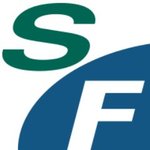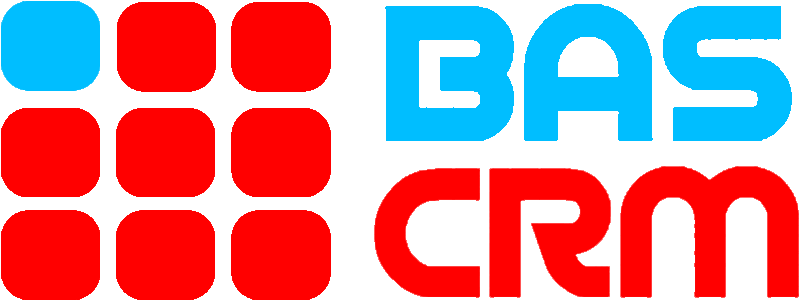Description

Salesmate

StayinFront
Comprehensive Overview: Salesmate vs StayinFront
Salesmate and StayinFront are both platforms aimed at enhancing sales and customer relationship management, but they cater to different needs within those broader categories. Here's a comprehensive overview of both:
Salesmate
a) Primary Functions and Target Markets
Primary Functions:
- Sales Automation: Salesmate offers a streamlined sales pipeline management with automation to simplify repetitive tasks and enhance productivity.
- Contact Management: It provides robust features for managing contact information and communication history.
- Email Campaigns: Allows users to create, manage, and track targeted email campaigns.
- Integrations: Offers integrations with a variety of third-party applications like Google Workspace, Zapier, and more.
- Reporting and Analytics: Provides insights and analytics to track sales performance and optimize strategies.
Target Markets:
- Small to Medium-sized Businesses (SMBs): Salesmate primarily targets SMBs across various industries who are looking for an affordable yet powerful CRM solution.
- Sales Teams: It is particularly suited for sales-oriented teams wanting to streamline their processes and engage more effectively with prospects.
b) Market Share and User Base
Salesmate does not have a dominant market share like some of the major CRM providers (such as Salesforce or HubSpot). It has a niche claiming primarily in the SMB space, with a growing user base due to its cost-effective pricing and ease of use. While specific user base numbers are not publicly available, the platform is recognized for scaling with businesses as they grow.
c) Key Differentiating Factors
- Affordability: One of Salesmate's significant advantages is its cost-effective pricing model tailored for smaller businesses.
- Ease of Use: It offers an intuitive interface that allows users to easily navigate and manage their sales processes without needing extensive training.
- Customization: The platform offers a high level of customization, allowing businesses to tailor features according to specific needs, enhancing flexibility.
StayinFront
a) Primary Functions and Target Markets
Primary Functions:
- Field Force Automation: StayinFront specializes in solutions for consumer goods companies, providing tools to manage field sales and merchandising activities.
- Retail Execution: Solutions that help improve productivity and optimize shelf space through actionable insights and analytics.
- CRM Tools: Offers CRM functionalities with a focus on life sciences and consumer goods industries.
- Mobile Optimization: Provides mobile solutions for sales representatives to access data and input information on the go.
- Analytics and Data Visualization: Provides powerful analytics to gain insights into sales and marketing performance.
Target Markets:
- Large Enterprises and Specific Industries: StayinFront is geared towards large enterprises, particularly in sectors like consumer goods, pharmaceuticals, and life sciences.
- Field Sales Teams: Companies that require sophisticated field sales and retail execution solutions often find StayinFront valuable.
b) Market Share and User Base
In comparison to mainstream CRMs, StayinFront serves a specialized niche market and has established a significant presence within its target industries. The user base mainly consists of large corporations and industry leaders in consumer goods and pharmaceuticals.
c) Key Differentiating Factors
- Industry Focus: Specifically tailored for industries like consumer goods and pharmaceuticals, providing industry-specific features that are hard to find in generic CRM solutions.
- Field Sales and Retail Execution: Offers robust field sales management tools, allowing organizations to optimize their in-store operations and improve salesperson efficiency.
- Advanced Analytics: Strong emphasis on analytics tailored for retail and field scenarios, providing insights that direct actionable improvements.
Conclusion
Salesmate and StayinFront cater to different market segments and have distinct functional focuses. Salesmate is more suitable for SMBs looking for affordable and versatile CRM solutions, while StayinFront caters to large enterprises requiring specialized field sales and retail execution capabilities. Both have their strengths, with Salesmate offering more flexibility for smaller businesses and StayinFront offering more industry-specific tools for large-scale operations in targeted industries.
Contact Info

Year founded :
2019
+61 1300 330 235
Not Available
Australia
http://www.linkedin.com/company/sales-mate

Year founded :
1996
+1 973-461-4800
Not Available
United States
http://www.linkedin.com/company/stayinfront
Feature Similarity Breakdown: Salesmate, StayinFront
When comparing Salesmate and StayinFront, both of which are CRM (Customer Relationship Management) solutions, it’s important to look at their core features, user interfaces, and unique offerings that differentiate each product. Here's a comparative breakdown based on general industry knowledge:
a) Core Features in Common
Both Salesmate and StayinFront offer a set of core CRM features, typical to many CRM solutions, which include:
-
Contact Management:
- Both platforms offer contact and lead management tools to capture, track, and manage customer information and interactions.
-
Sales Pipeline Management:
- They allow users to track sales opportunities and manage stages in the sales pipeline for better visibility and forecasting.
-
Reporting & Analytics:
- Both provide reporting tools to analyze sales data, customer interactions, and team performance to make informed business decisions.
-
Task Management:
- Users can create, assign, and track tasks to ensure timely follow-ups and efficient workflow management.
-
Integration Capabilities:
- Salesmate and StayinFront offer integrations with various third-party applications to enhance functionality and connect with other tools businesses use.
-
Mobile Access:
- Both offer mobile applications to access CRM functionalities on-the-go, staying updated with customer interactions and sales processes.
-
Email Integration:
- They include email synchronization and tracking features to manage communications directly from the CRM platform.
b) User Interface Comparison
-
Salesmate:
- Salesmate is known for its modern, intuitive, and user-friendly interface, which is often praised for its ease of use and minimalistic design. It's designed to be straightforward with simple navigation, making it easy for new users to adapt quickly.
-
StayinFront:
- StayinFront's interface, while comprehensive, is described as more traditional and may require a slight learning curve, especially due to its broad feature set aimed at enterprises. It focuses on industry-specific customizations which might clutter the interface for general CRM use.
c) Unique Features
-
Salesmate:
- Built-in Calling & Texting: Salesmate offers integrated calling and texting capabilities, allowing users to make calls and send texts directly from the platform, which is particularly beneficial for sales teams.
- Automation Journeys: Salesmate features automation tools that help create automated workflows and customer journeys, enhancing marketing efforts and customer engagement.
-
StayinFront:
- Advanced Targeting and Segmentation: StayinFront excels in providing robust segmentation and targeting tools that are particularly useful for field sales teams.
- Dedicated Vertical Solutions: StayinFront offers industry-specific CRM solutions, especially tailored for the consumer goods, pharmaceutical, and field service industries, providing deep functionality specific to those sectors.
- Field Force Management: This feature supports extensive field sales functionalities, including route optimization and in-field data capture, making it a strong choice for businesses with a heavy field presence.
In summary, while both Salesmate and StayinFront cover the essential CRM functionalities, Salesmate leans towards providing a streamlined, user-friendly experience with built-in communication tools, whereas StayinFront offers more specialized solutions and features tailored for field sales enhancements and specific industries.
Features

Sales Automation
Reporting and Analytics
Communication Tools
Contact Management
Integration Capabilities

Mobile Accessibility
Customer Support Tools
Sales Force Automation
Analytics and Reporting
Customer Relationship Management
Best Fit Use Cases: Salesmate, StayinFront
When evaluating CRM and sales solutions like Salesmate and StayinFront, understanding their best fit use cases helps in selecting the right tool for specific business needs. Here's a breakdown of each:
a) Salesmate Best Fit Use Cases
Business Types and Projects:
- Small to Medium-Sized Businesses (SMBs): Salesmate is ideal for SMBs due to its affordability, ease of use, and scalable features that support growing businesses without overwhelming them with enterprise-level complexities.
- Startups: Its capability to be rapidly deployed with minimal setup makes Salesmate a great choice for startups that need quick CRM implementation.
- Sales Teams Focused on Customer Engagement: With features like automation, telephony, and email tracking, Salesmate is suited for organizations focused on enhancing customer engagement and streamlining sales processes.
- Project Management: Its basic project management tools help companies keep track of tasks and timelines linked to sales and customer relationship activities.
- Service-Based Businesses: Salesmate is ideal for businesses where building and maintaining customer relationships are critical. It helps in organizing client interactions and managing leads.
b) StayinFront Preferred Use Cases
Scenarios and Business Needs:
- Field Sales and Service Teams: StayinFront is known for its robust functionality supporting field operations, making it a top choice for companies with a large field sales force or field service component.
- Consumer Goods and Retail Industries: With strong features in retail execution, merchandising, and order management, StayinFront caters well to the consumer goods and retail sectors.
- Pharmaceuticals and Healthcare: These industries benefit from StayinFront’s compliance and sample management features, which are crucial in regulated environments.
- Multi-channel Sales Strategy: Companies employing diverse sales channels, including direct, indirect, and e-commerce, find StayinFront’s centralization of data and insights advantageous.
- Enterprises with Complex Processes: Larger organizations with complex sales and service processes benefit from StayinFront's customizable solutions and integration capabilities.
d) Catering to Different Industry Verticals or Company Sizes
-
Salesmate: Primarily targets SMBs across various industries such as tech startups, real estate, professional services, and consulting firms. Its focus on flexibility, ease of integration with third-party apps, and competitive pricing makes it appealing to smaller businesses seeking to bolster their CRM capabilities without extensive overhead.
-
StayinFront: Geared more towards enterprise-level clients in specific verticals such as CPG, healthcare, and pharmaceuticals. It offers highly tailored and industry-specific solutions that accommodate complex business requirements, making it suitable for large organizations looking for comprehensive CRM systems with robust field operations capabilities.
In summary, choosing between these two should be based on the size of the company, industry focus, and the complexity of business processes. Salesmate excels in providing cost-effective, user-friendly, and broad CRM services for small to medium enterprises, while StayinFront specializes in field force solutions for larger enterprises with intricate logistical demands.
Pricing

Pricing Not Available

Pricing Not Available
Metrics History
Metrics History
Comparing teamSize across companies
Conclusion & Final Verdict: Salesmate vs StayinFront
To provide a comprehensive conclusion for Salesmate and StayinFront, let's evaluate these CRM solutions based on their features, usability, cost, support, and scalability.
a) Considering all factors, which product offers the best overall value?
Both Salesmate and StayinFront cater to different segments of the market, with Salesmate being more suited for small to medium-sized businesses and StayinFront targeting large enterprises and field force automation. They each offer unique strengths depending on the specific needs of an organization.
- Salesmate generally provides better overall value for small to medium-sized businesses. It offers an intuitive interface, is cost-effective, and integrates well with other tools, making it ideal for companies looking to streamline their sales processes without incurring a high cost.
- StayinFront, on the other hand, is more valuable for large enterprises that need advanced field force management capabilities and deep analytic insights. It is robust in handling larger scale operations but often comes at a higher price point with a steeper learning curve.
b) Pros and Cons of Choosing Each Product
Salesmate:
Pros:
- Intuitive and user-friendly interface.
- Cost-effective pricing, appealing for SMEs.
- Strong integration capabilities with other business tools.
- Excellent customer support and easy onboarding process.
- Customizable workflows and automation features.
Cons:
- May lack some advanced functionalities needed for large enterprises.
- Limited field service management options.
- Some users might outgrow its capabilities as they scale.
StayinFront:
Pros:
- Advanced features for field force automation.
- Comprehensive analytic and reporting tools.
- Highly customizable to cater to different industries.
- Suitable for large-scale operations and enterprises.
- Strong support for mobile applications and remote access.
Cons:
- Higher cost, potentially less appealing to smaller businesses.
- Steeper learning curve requiring training.
- Complexity might be overwhelming for smaller teams.
c) Recommendations for Users Deciding Between Salesmate vs StayinFront
-
Assess the Scale of Your Operations: If you're a small to medium-sized business looking for a cost-effective, easy-to-use CRM with solid features, Salesmate is likely the best choice. It's tailored to streamline sales and improve efficiency without overwhelming smaller teams with unnecessary complexity.
-
Consider Your Industry Needs: For industries that heavily rely on field force management, such as consumer goods, pharmaceuticals, or large-scale distribution, StayinFront offers robust capabilities tailored to meet these needs.
-
Budget Considerations: Evaluate your budget for CRM solutions. If budget constraints exist, Salesmate offers a strong set of features at a lower cost, whereas StayinFront is more suitable if there's room for a higher investment in exchange for enhanced advanced functionalities.
-
Trial and Testing: Many CRM platforms offer demos or trial periods. Utilize these to explore each system's features and interface with your team.
-
Evaluate Integrations and Customization: Consider other tools in your tech stack and assess how well each CRM integrates with them. Additionally, look into the customization capabilities to ensure the CRM can adapt as your business evolves.
Ultimately, the choice between Salesmate and StayinFront should be guided by your business size, industry requirements, desired features, and budget. By assessing these factors, businesses can ensure they select a solution that aligns with their operational needs and growth objectives.
Add to compare
Add similar companies




